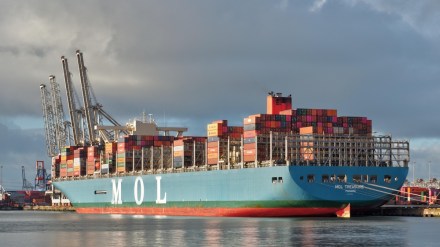A proposed US bill that includes a 500% tariff on countries importing oil from Russia could significantly disrupt Indian supplies, and also raise its oil import bill, industry experts warn. US Preesident Donald Trump is considering the Sanctioning Russia Act of 2025, which aims to pressure Russia over the Ukraine war.
Russia has become India’s top crude supplier since the Ukraine conflict, now accounting for over 35% of India’s total oil imports. Indian refiners turned to Russian barrels due to steep discounts, even after Western sanctions were imposed.
“Suppose Russian crude is priced out due to tariffs or tighter compliance risks, we anticipate a gradual but steady reallocation toward WTI, Brazilian pre-salt barrels, and a resurgence in Middle Eastern term flows,” Sumit Ritolia, lead research analyst, refining & modeling at Kpler, had told FE.
He had highlighted that if secondary tariffs are imposed and actuality comes hard on Russian crude, India’s oil import bill could rise significantly, potentially by $3–6 per replacement barrel, depending on origin. “This would impact refiner margins and retail fuel pricing, unless mitigated via new term contracts or discounts,” he had said.
Even with longer haul and shadow fleet reliance, Russian barrels remain $3–8/bbl cheaper than West Asian or US grades on a landed-cost basis. If tariffs are levied on Russian oil, India is highly likely to experience a rise in its overall oil import costs.
Expressing his concern over the development, India’s petroleum minister Hardeep Singh Puri said in a post on X that Russia is one of the largest crude producers with over 9 million barrels/day. “Imagine the chaos if this oil, amounting to about 10% of the global oil supply of around 97 million, vanished from the market. It would have forced the world to reduce its consumption, and since the consumers would be chasing the reduced supplies, the prices would’ve spiralled to over $120-130,” Puri said.
The minister highlighted that Russian oil was never under global sanctions. “Sensible decision makers around the world were aware of the realities of global oil supply chains and how India was only helping the global markets by buying discounted oil under a price cap from wherever we could,” he said.
The government and industry players believe that a possible disruption in Russian oil supplies could infuse volatility in the global oil markets.
The US’s proposed Bill, called the Sanctioning Russia Act of 2025, states, “To impose sanctions and other measures with respect to the Russian Federation if the Government of the Russian Federation refuses to negotiate a peace agreement with Ukraine, violates any such agreement, or initiates another military invasion of Ukraine, and for other purposes.” It also includes a provision to impose a 500% tariff on countries, like India and China, that continue purchasing Russian energy products.
“A tariff action prompted flow rejig could therefore mean buying of more traditional origin crude grades for Indian refiners,” Pulkit Agarwal, head of India content (cross commodities), S&P Global Commodity Insights, had said.
With Venezuelan crude already under US tariffs and Russian flows potentially facing similar restrictions, Indian refiners are likely to diversify oil supplies further, primarily from the US, Brazil, West Africa, and West Asia.
India’s crude oil inflows from the US surged more than 50% in the first half of 2025, compared with the same period of 2024, while flows from Brazil rose 80% over the same period, as per data from the S&P Global commodity Insights.
According to data from S&P Global Commodities at Sea, India imported 271,000 barrels per day of crude oil from the US in the year’s first half, up around 51% from 180,000 b/d imported in the same period in 2024.
Indian refiners have been used to relatively large volumes of US crude in the past, but volumes had slowed down over the past two to three years when India turned to Russian crude after it started providing heavy discounts on its crude.
India has also been gradually increasing its intake of Brazilian grades like Tupi and Búzios, which are cost-competitive and suit Indian refining slates.
Crude inflows from Brazil posted the sharpest growth in the six-month period, rising about 80% y-o-y to 73,000 b/d from nearly 41,000 b/d, the S&P data showed.
India’s imports of Russian crude oil in June alone are estimated to have touched a two-year high of 2.13 million barrels per day, supported by significant pricing advantages, according to data from global real-time data and analytics provider Kpler.
Even after the sanctions in January, Russian crude flows have remained resilient, averaging 1.68 Mbd in Q1CY25 owing to attractive discounts on Urals and other Russian grades and continued availability of non-sanctioned Russian-affiliated vessels.
New US tariffs or secondary sanctions could disrupt this trend. Indian refiners may face higher freight and insurance costs, increased compliance and counterparty risks.
However, analysts note that Indian refiners are likely to continue sourcing Russian crude opportunistically, especially if the price spreads remain wide and existing financial and shipping workarounds remain viable.
“India remains a core demand center for Russian oil amid Western disengagement. Price and refining economics outweigh geopolitical pressure — at least in the current framework. If secondary sanctions, targeting buyers, traders, or insurers, are not imposed, we can expect continued strong Russian crude flows to India, especially in a high-demand, high-margin environment,” Ritolia had said.
